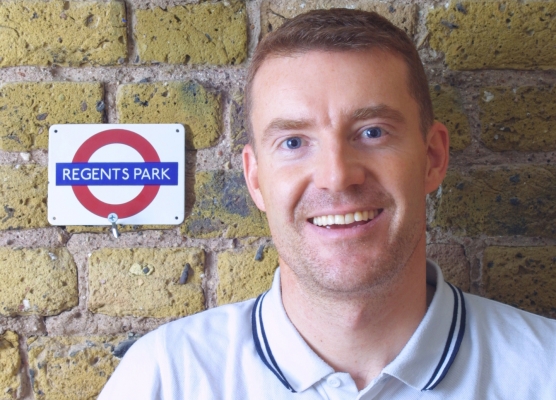Summit speaker: well-designed transit systems and maps are things of beauty

Designing efficient transit systems is only one piece of the puzzle. Getting people to use them is another.
In his bestselling “Transit Maps of the World” and followup work “Paris Metro Style: In Map and Station Design,” Mark Ovenden detailed the beauty of maps people use to navigate transit systems and of the stations themselves.
“When you walk into the Paris Metro system, with its art nouveau stations, it does affect you, whether you notice it or not,” Ovenden said. “It feels nice to be in. It encourages people to use the train.”
Ovenden will offer his take on transportation systems as the keynote speaker at the Oregon Transportation Summit, Friday, Sept. 9 at Portland State University.
Ovenden vaulted to fame with “Transit Maps of the World” after a career in radio and television. But he always had an interest in collecting maps and riding transit systems. “On a school trip to Paris at 9 or 10, I just wanted to ride the Metro all day,” he said. “The teacher said, ‘no, come with us to the Eiffel Tower, you idiot.’”
Even out of context, the maps Ovenden compiled serve as an art work. But much of their beauty lies in their function: getting people around smoothly. Some of the best maps, such as those of Paris and New York, are both beautiful and intuitive. Maps that just make an artistic statement risk aggravating riders.
“Madrid, for example, had a beautiful and easy-to-use map for years and then some bright spark wanted to do it different,” Ovenden said. “It has no curves or angles whatsoever, just horizontal and vertical lines. It just does not work.”
Ovenden’s love for trains extended to his most recent book, “Railway Maps of the World.” Rail lines have always built cities, he said, and “Railway Maps” details the rise of urbanization and industrialization. “Railways were pivotally crucial to the entire western world. The Industrial Revolution wouldn’t have happened in the same way without them. You wouldn’t have opened up the great interiors of Asia and North America without them.”
These days, it’s opening—or reopening—the interiors of cities that interests Ovenden. Development will follow rail lines, he said. Used properly, rails will lead to redevelopment. Used improperly, they create sprawl.
“We have to be careful of our land use to not have these massive ‘edge cities,’” he said. “I want to see our green spaces stay and to have more intense development around (urban) transit stations.”
Ovenden hasn’t yet been inspired by buses, although he admires the bus systems with arrival displays and reliable service. But people’s preference for trains isn’t just a product of good maps and marketing.
“In the 21st century, we don’t really want big, chunky, polluting, heavy vehicles belching out diesel and carbon fumes in our streets, thank you very much,” he said. “If you can put down, on main arteries of cities, rail lines and maybe small little feeder buses, that’s surely the way forward.”
Ovenden’s next project, a book commemorating 150 years of London Underground design, comes out in 2013. Though much has changed in those years, maps remain. Even looking to the future, Ovenden isn't worried about digital devices displacing maps.
Some of the maps in "Transit Maps of the World" were accessed digitally; Ovenden never saw them on paper until he printed them himself. “There are always going to be people who like printed maps,” he said. “From that work comes the ability to make maps on a portable device. I don’t see a conflict in the two.
“I think maps are a thing of beauty; they have artistic value and appeal,” he said. “Why wouldn’t you want to keep those?”
Click here for more information on the Oregon Transportation Summit and to register.
